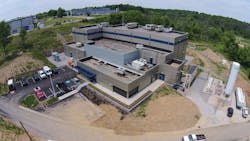Like most technologies, there is a huge wave of interest surrounding their introduction followed by a slowdown in news as users evaluate the technology and determine its usefulness through initial applications. The rate of developments through this slowdown in news often determines the staying power of the new technology. And though the news around 3D printing never slowed significantly, recent activity suggests a surge in 3D printing use across industry in the near term.
A few of these announcements I’m referring to include Alcoa’s opening of its 3D printing metal powder production facility at the Alcoa Technical Center in Pennsylvania. The facility will reportedly produce proprietary titanium, nickel and aluminum powders for 3D printed aerospace parts. Alcoa is focusing on this area because metal powders used for 3D printing durable aerospace parts are only available in limited quantities. In addition, Airbus recently selected Alcoa to supply 3D printed titanium fuselage and engine pylon parts for its commercial aircraft.
Beyond producing powders for 3D printing, Alcoa recently unveiled its Ampliforge process—a technique that combines additive and traditional manufacturing. Using this process, Alcoa designs and 3D prints a nearly complete part then treats it using a traditional manufacturing process, such as forging. The process is said to increase the toughness and strength of 3D printed parts.
Meanwhile, Stratasys Ltd., a supplier of 3D printing and additive manufacturing technologies, has released new software designed to make 3D printing easier. GrabCAD Print is an open architecture design-to-3D print workflow application that resides on the GrabCAD platform. Stratasys says this platform is supported by a community of more than 3 million designers, engineers and students.
Stratasys explains that the 3D printing design process is typically characterized by significant “model fixing” time, which forces businesses to devise manual solutions to construct an acceptable workflow. GrabCAD Print addresses this issue by eliminating the requirements to translate and repair CAD files. Using GrabCAD Print, users can send native CAD files to a Stratasys 3D Printer or service bureau directly from their familiar CAD environments.
Explaining the software’s openness, Stratasys says GrabCAD Print works with a variety of Stratasys FDM and PolyJet 3D Printers and can natively read several CAD formats from PTC Creo, Dassault Systèmes’ SolidWorks, Siemens PLM Software’s NX software, CATIA and Autodesk Inventor. The application also facilitates data sharing related to job scheduling, print queue status, material usage and historical usage.
There is also news from UL about its Additive Manufacturing Competency Center (UL AMCC) which UL jointly runs with the University of Louisville.
According to UL, training at the center begins with an in-depth review of metal powders, safety issues and processing considerations for a facility, as well as the requirements for personal protection. Courses then move on to cover the overall additive process—from beginning to advanced design considerations and how to build a system to support part removal and post-processing.
Students build their own metal parts before training concludes, either by using designs developed by the center or bringing their own. Instructors review them to verify they are buildable and help the students think through support strategies for the manufacturing process that might include how to incorporate a support structure when building the material.

